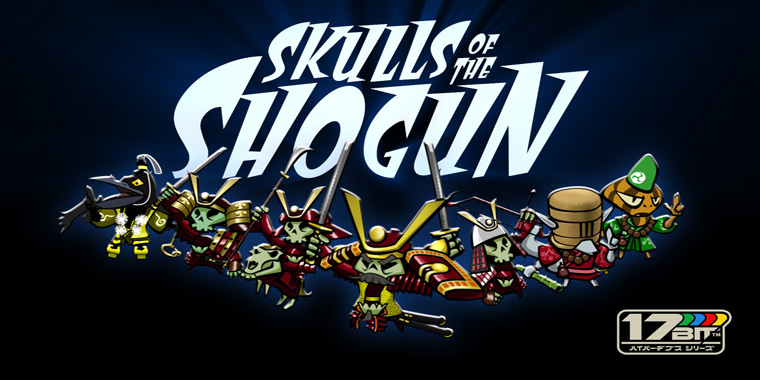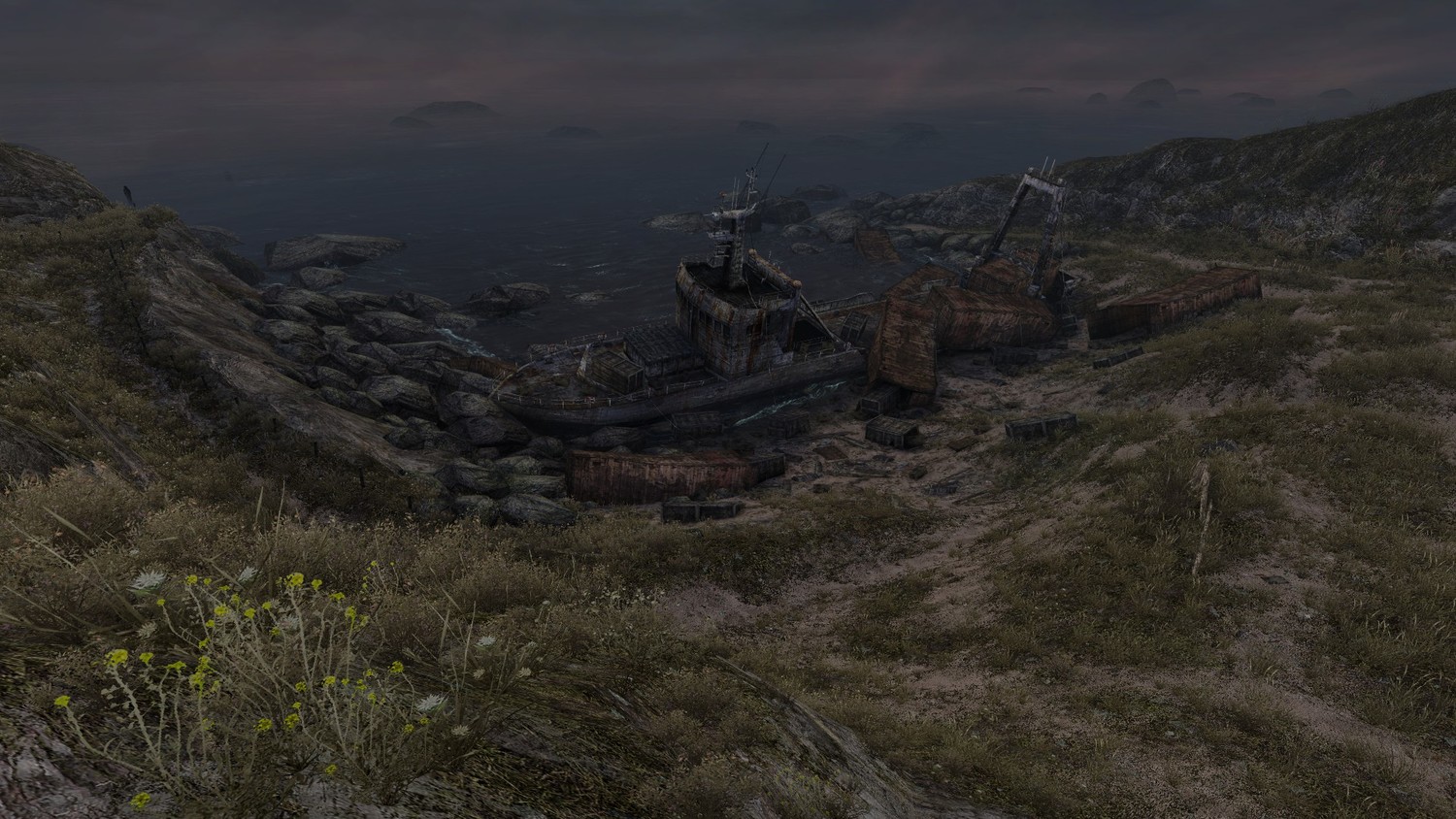
Review: Skulls of the Shogun: Bone-a-Fide Edition
Posted by Eric G on June 25th, 2015 | 0 Comments | Tags: 17-Bit , Skulls of the Shogun: Bone-a-Fide Edition
I had heard of Skulls of the Shogun at various shows before. Like Orcs Must Die and a handful of other indies, it’s a game that gains a lot of accolades but was never on my appointments list due to its non-Sony platform affiliations. At the beginning of June, though, everyone with PlayStation Plus received Skulls of the Shogun: Bone-a-Fide Edition free. And I hope everyone who received the game downloaded it, because this is one of those Plus offerings that you will most definitely want to get your hands on.
Skulls of the Shogun is a turn-based strategy game where you control a general and his army of soldiers. The usual objective is to dispatch the enemy’s general. Each turn, you can carry out five orders. (An order consists of movement and/or one action, in either order.) You are usually in control of more than five units, so right off the bat you’ve got some strategizing to do. The game is fundamentally different from most similar, tactical games I’ve played because there are no tiles, hexes, squares, etc. Each unit has a range within which it can move, something like Valkyria Chronicles or Warhammer 40k. In addition, each unit type has slightly different base stats. The horse-riding samurai, for example, can move the farthest but has mid-range attack and armor. The archer packs a powerful punch but gets hit really hard. Combat gets deeper when you factor in the spirit walls and environmental hazards. An attack from one of the two base melee units causes knockback unless the target is sidled up against one or more teammates. Even a general on the edge of a map can be knocked off with a well-directed prod. The environmental factors of war don’t stop there, either.
Scattered around each map are rice fields, bases, shrines, and more. To control one of these structures, you must send a unit there to haunt it for an entire turn. Haunting a structure leaves a unit vulnerable to attack but resistant to knockback. It can also serve as a solid lure now and again. A rice field grants its controller 25 rice each round. Rice can be used to purchase units from bases (which must also be controlled) or to cast higher level monk spells. Monks are summoned by controlling a shrine. There’s a shrine for each monk (Fox, Salamander, Crow, and Tanuki), and some maps have a multi-shrine that allows you to summon a monk of your choosing. The game relies heavily on visual cues. Besides for the various shines calling forth different units, there’s a bunch of other information conveyed through the graphics. If an enemy can’t counter attack, it winces. If it can, it bears its gleaming weapon at you. Banners attached to the backs of units depict health totals. Downed enemies leave skulls scattered across the playing field that can be eaten to power up. I know it sounds silly to say this about a video game, but there’s a lot of visual information to take in. Luckily, the game does a good job making the cues distinguishable enough to not cause confusion.
Skulls of the Shogun has a full-fledged campaign and a multiplayer component. The campaign took me about 5 and a half hours to complete, not including the Forgotten Isles section. Most of the missions until the very end teach you a thing or two about battle. You’ll often be outnumbered, but with some foresight and perhaps a couple of retries, you’ll learn how to overcome unfair odds. Along with the overall objective (kill the general), there are three golden skulls that can be earned by completing different tasks. One negative note about the golden skulls is that you don’t know how to obtain them before starting the mission. I often completed a mission, saw the golden skull caveat, and thought, “oh, come on. I could have easily earned that.” I suppose this is set up in this way to push replayability. The game supports local or online multiplayer for up to four people. There are 36 maps in all, which seems like a lot. The first few multiplayer games I tried failed either at the outset or part-way through the battle. The game simply kicked everyone. I managed to complete two games online – one was taken over by AI by the time the game ended, and the other was a glorious comeback from a sole general to victory. I would love to play more of this game online, but it seems as if the community or the netcode is unreliable, at best.

Throughout the campaign, I really enjoyed the dialogue. There are lots of allusions that aren’t too tired and a playfulness about the characters that makes their outrages entertaining. I enjoyed the story of vengeance and the cast as a whole, especially General Akamoto. The music loops were repetitive enough to make me download Spotify on my PS4, go through the forgotten password dance, and get some D’Angelo playing instead. The weird thing is that I don’t dislike the music. As a matter of fact, I think the upbeat Japanese fusion tracks are pretty rad. The loops slayed me, though. Another detractor about the game is that it feels a lot longer than it is. Besides for the final mission, each took me anywhere from 5-15 minutes to complete. However, I felt like I had been playing for upwards of an hour each time and that I needed a break. It wasn’t the type of timesink that goes blissfully unnoticed. It was the type of timesink that drained my enthusiasm to keep playing. The Bone-a-Fide Edition includes an XP system that unlocks titles and avatars. I’m not sure it’s a necessary addition. Other than those minor critiques, I enjoyed the game. It shining attribute is the fact that it is deeply tactical. You’ve got a lot of plans to choose from – killing units, haunting rice fields and buildings, teching up your own minions by eating skulls. You also need to think how to use your general and when to awaken him, if at all. The balance comes in the fact that there are so many different strategic vehicles driving to the overall objective – destroying the opposing general. You’re required to monitor and adapt in real-time if your opponent’s strategy suddenly changes. At first it’s a bit off-putting realizing that your tried and true strat doesn’t work 100% of the time. It’s also the sign of a solid tactical game that won’t grow stale too soon.
A copy of this game was purchased for free for review purposes. For more info on our review policy click here.
General Info
- Price: $9.99, (Free with Plus), June 2015)
- Genre: Strategy, Tactics, Vengeance
- Players: 1-4 (Local OR Online)
- Ratings: PEGI 7, Teen
Score:
What I Like:
- Many strats
- Visual stylings
- Dialogue in campaign
What I Dislike:
- Music loops grow repetitive fast
- Online is unreliable



















































